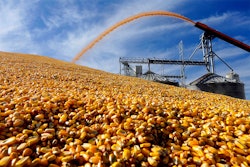We’re strolling out of Wixon’s Wisconsin headquarters and production plant and as we breathe in the fresh air, it’s suddenly apparent we’re being followed by an aroma cloud that must always permeate the building.
“Ah yes, that’s the ‘Wixon smell.’ That’s what we call it,” says Eric Putnam, the food safety, quality, and training systems manager at the Milwaukee-based flavors and seasonings company.
The smell is a delicious and potent mix of savory seasonings with a hint of something sweet. But there are so many scents packed into the mouth-watering cloud — like standing in a kitchen filled with 10 boiling pots of different soups — that no particular spice note stands out. It’s aromatherapy for foodies.
It makes sense that such a mélange of aromas would hang over Wixon. The company has more than 36,000 formulas in its vault and creates roughly 100 new formula systems every month. If you can dream it, they can help you taste it.
Wixon has three main divisions — meat and poultry, industrial ingredients and consumer products — and its flavor creations are all over the shelves at grocery stores, from sausages to snacks to bakery items and beverages. The company works with the 50 top food brands in the U.S. and many more.
With consumer tastes always in flux, Wixon is a company that has to stay nimble and alert, with flavorists and research and development scientists who can whip up tasty solutions to whatever flavor challenges food companies face. It’s a position that puts them at the forefront of every oncoming food trend.
On a recent tour of Wixon, the company’s top executive and management gave us a taste of what goes into their operations, explained the company’s recent growth spurt, and revealed exactly what great flavors are behind the “Wixon smell.”
A Century Going Strong
“We call ourselves a family business,” Peter Gottsacker, Wixon’s president, said. “I don’t want to sound hokey, but in this day and age of mergers and acquisitions ... people connect with (the fact that) we’re not a big Wall Street company.”
Gottsacker’s humble mentality goes back to the company’s very humble beginnings.
Just over 100 years ago, the company started when Charles Wixon began wheeling spices around Chicago on a horse-drawn carriage to peddle seasonings to meat makers. In the 1960s, the company merged with Milwaukee Spices and relocated to its current location on the edges of General Mitchell International Airport. After a change of ownership in 2005, a trend of reliable growth started and hasn’t let up to this day.
Wixon doesn’t publish its sales numbers but Gottsacker says they’re “north of $100 million,” with a compound annual growth rate of about 12 percent over the last five years. “We have doubled sales in the last five years,” Gottsacker said.
The division showing the highest growth this year is consumer products, which is up 18 percent after staying flat last year.
What’s driving the company’s success? It all comes back to trends in packaged foods.
A Taste of the Trends
“One of the big trends is that companies want to fortify everything,” Gottsackerexplained. “We’re in a sweet spot because that trend alone has flavor challenges. You can’t just add protein to a bar or a cereal and expect it to taste good. So we have the technologies and flavor systems to make it taste good.”
Another big taste trend hitting the food scene is alcohol — not for drinking, but for enhancing flavor. According to Gottsacker, a flavor like bourbon might be the next salted chocolate caramel or pumpkin spice.
But there have also been big food industry trends lately that go behind popular flavors of the day, and have caused companies like Wixon to reevaluate their formulas. Mainly, the “free from” movement.
Ingredient sourcing has become a hot button issue that has caused many major corporations — including General Mills, Panera Bread, Noodles & Company and others — to ban or cut artificial flavors from their ingredients.
“Label reading is a big trend,” Gottsacker said. “If the label has a big word on it, people don’t like it. So many companies say, ‘We don’t want to fight. We’ll just take the petroleum flavors out.’ ”
Now, many food companies have to look to natural sources to produce the same molecules as petroleum derivatives. It’s not always an easy task.
To make a red dye from a beet, for example, Gottsacker says the company faces a more expensive process that can be hindered by crop variations and less certain outcomes with flavor than what petroleum derivatives can provide. But like always, the company is bending in the breeze and now producing flavors and dyes from a host of natural sources.
Meeting the Challenges
Despite the positive sales numbers, Gottsacker says there are challenges to doing well. The skills gap continues to be one of the main issues keeping him up at night.
“It’s like turning the Queen Mary,” Gottsacker said. “We can turn pretty quickly to address new trends. But it’s really about having the people in the right place to move quickly. Wixon is growing from a company of tribal knowledge and really good expeditors to one that needs new systems instead of expeditors.”
While Wixon’s location gives the company access to the blue collar skills needed to run its production facilities, Gottsacker says filling R&D, sales and even executive positions continues to be a challenge.
To help, the company has begun mobilizing with new tech to bring its production process up to date. It’s an approach that has led Wixon to reexamine its entire supply chain, from demand planning to sales, to implementing orders and shipping them out the door. The simple answer to make the entire process go smoother? More automation.
“We’re on a made-to-order basis,” Gottsacker said. “We’re like a little shop where the order comes in, and then we order what we need to make it on time. So now we have a forecasting tool that is seamless into the order system that is seamless into the supplier system. Now someone might never touch that order.
“That sounds crazy. But that’s where we need to be headed.”
Food Safety in the Age of Social Media
For all the benefits of new technology, today’s gadgets have also raised new issues. Namely, Gottsacker says they are encountering contamination detection they never could have predicted — and that has sometimes outpaced regulatory understanding of food safety.
Gottsacker cites one instance where extremely trace amounts of peanut were showing up in batches of cumin. Because of agricultural cross-contamination — which can happen when two crops are planted too close to each other — peanut surprisingly appeared in Wixon’s routine analytics.
“With the sophistication of our analytical equipment…we could pick it up at parts per billion. We’ve never had this technology before!” he said. “So now what do you do? You have to ask the FDA. But have the regulations kept up with the technology? Not yet.”
From allergens to foodborne illnesses, Gottsacker says like any food manufacturer, he worries that one day the red light on his phone will light up with a call that a Wixon product is being recalled.
“I don’t know any manufacturer that hasn’t (had a product recalled). And if they haven’t I’d question that manufacturer,” Gottsacker said. “But we’ve never had a recall caused by Wixon.”
Still, keeping food safe is not only a major business concern for the sake of consumers’ health. With the information shooting across the Internet at lightning speed — even if it’s not accurate — the possibility of a company’s image being tainted overnight is always a concern.
“Social media has exponentially increased our risks. You or your customer’s brand can be destroyed in one Tweet. It’s not vetted,” Gottsacker said.
International Sourcing
Keeping contaminants out of its products is made even trickier by the fact that Wixonsources about 65-70 percent of its base ingredients — such as onion, garlic, pepper and soy — from other countries. The company’s biggest suppliers include China, Vietnam, India and Egypt.
The patchwork of regulatory systems and uneven quality control can make this process a daily gamble. Coming back to cumin, Gottsacker says they’ve found instances where peanuts were ground into the spice to cut costs — a case of “economic contamination.”
War and unrest in the Middle East have also changed the game for Wixon and can frequently derail the supply chain. “We do a lot with licorice and a lot can be sourced from the Middle East,” he said. “But we see constant disruptions from that region.”
Despite the challenges, the mood at Wixon is very upbeat and the company has new plans for expanding production soon. Gottsacker is quick to remind that he thinks “it’s still a fun business.”
In the Plant
Two words about Eric Putnam: Safety. Nerd.
It’s his job, of course, as the food safety, quality, and training systems manager. But it’s clear that Putnam and the company don’t just strive to implement safety procedures as much as they strive to create an entire safety culture.
“Our safety motto is: We want you to go home at least as safe and healthy as you were when you came in,” Putnam said. “If you go home even healthier, that’s fantastic.”
The writing is on the wall, literally, inside Wixon’s plant, where several rooms display a “Setup Performance” board with information about quality issues, safety audits and a record of injuries (it’s been years since any noteworthy injury).
That type of tool also increases employee engagement, which has been a priority for Putnam and the company’s management team. “We’re having a big push for employee empowerment right now,” he said. “As managers we can say, ‘Do this, do this,’ but instead we’re trying to go to the employees and ask: ‘What works best for you?’ ”
The Wixon smell, of course, is everywhere, even as we head across the street to the company’s R&D facilities and Culinary Center.
In the lab, the folks in white coats play with a giant chemistry set, including rooms full of tiny vials, as they skillfully render different seasonings and flavors. Meanwhile, outside the company’s culinary kitchen, managers are gathered for a continuing education class — what Putnam calls another example of Wixon’s commitment to employee empowerment.
Looking ahead, Gottsacker says the company has big plans for new packing equipment and a $5 million plant expansion. And the “Wixon smell” is sure to hang over the company’s new digs.
So what exactly goes into the aroma? According to Gottsacker, it’s a mix of pepper,oregano, fennel, onion and garlic. But of course, with new flavors always in the works, it changes every day.
Editor's note: This article originally appeared in the November/December 2015 issue of Food Manufacturing






















